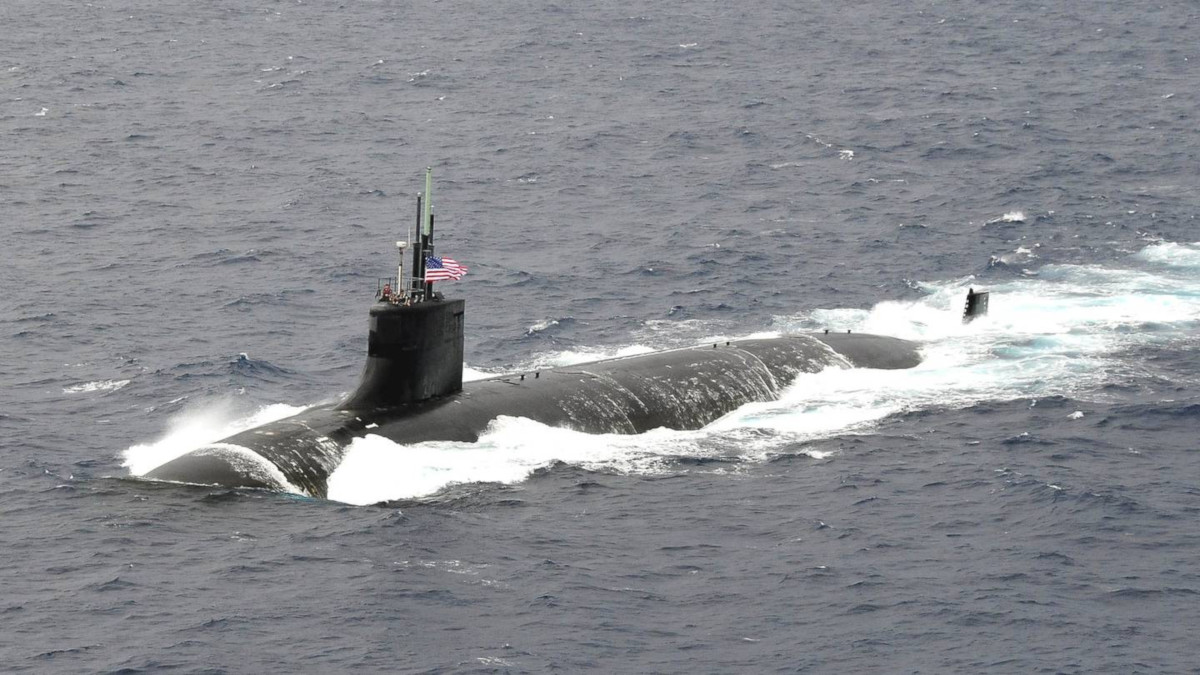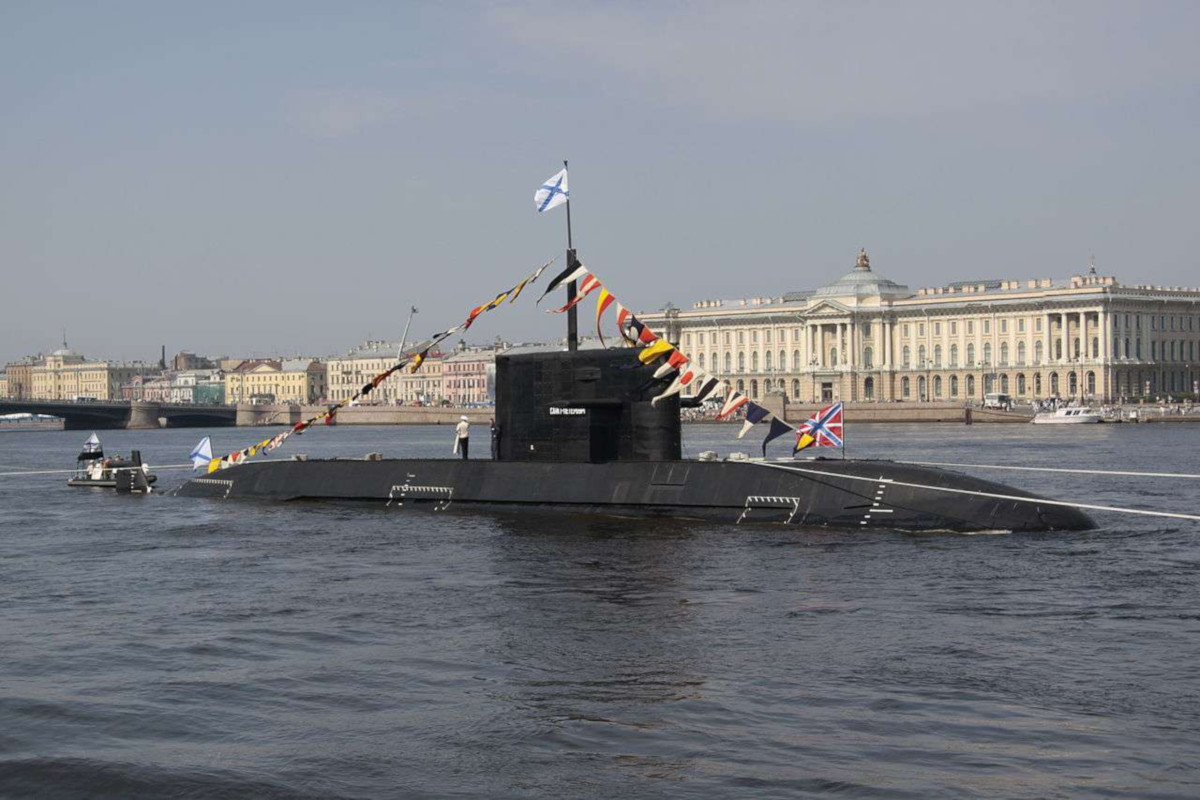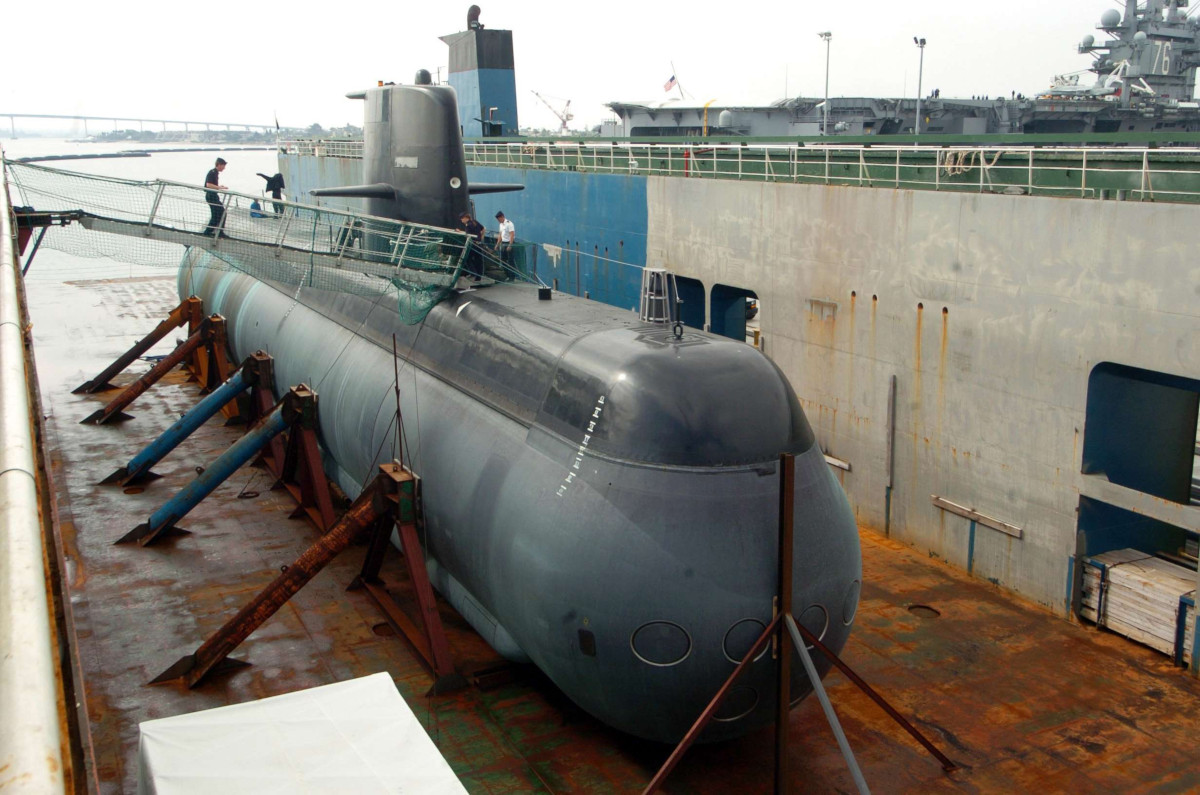Amid concerns of increasing Russian and Chinese submarine activity, the U.S. Navy wants a larger class of attacks subs that are more focused on countering those potential threats. Now, the service is planning to establish a specialized underwater aggressor squadron to help prepare attack sub crews to go on the hunt, which also might offer yet another argument in favor of buying new, advanced diesel-electric submarines.
U.S. Navy Vice Admiral Charles Richard highlighted the plans in remarks at the Naval Submarine League’s annual conference on Nov. 7, 2018. Richard assumed the tri-hatted role of Commander, Submarine Forces, as well as head of both Submarine Force Atlantic and NATO’s Allied Submarine Command, in August 2018.
“We have restructured and returned the fast attack training period to ensure that we’re ready for that high-end fight, including restructuring what we used to call the Tactical Readiness Evaluation, and it is now a Combat Readiness Evaluation to ensure we’re focused on warfighting,” Richard explained. “I want to produce winners and losers just like we do in battle; it does you no good to be at standards if your opponent is more at standards than you are. You still lose, and in this competition, you may not come home.”
The admiral likened the overarching plan for the Submarine Forces to creating an advanced training regimen for attack submarine crews akin to the Navy’s Topgun program for fighter pilots. Topgun puts select pilots through a challenging combination of classroom courses and flight training. The aviators who graduate go back to both operational and dedicated training units to act as instructors themselves.

To go along with that, Richard wants a submarine aggressor squadron composed of active duty and reserve sailors, as well as civilian contractors, for other Navy submariners to train against. Topgun has its own dedicated and highly trained “red air” adversary element to provide mock opponents for its students.
“We’re taking a page from naval aviation and we’re establishing an aggressor squadron with a team that will become experts in employing our adversaries’ potential capabilities and then set them up to be able to go head-to-head with our units so that we’re always training against what we think is the highest fidelity simulation I can give them in terms of what they might be able to expect when they go into combat,” Richard said. This is “a cadre that does nothing but emulate red in all of our training and certification exercises.”

Aggressors or “opposing force” (OPFOR) units, which are themselves trained in the doctrine and tactics of potential opponents, or the “red” force, are a valuable way to improve the realism of training exercises. They are a common feature across the U.S. military, especially when it comes to drills in the air and on the ground. A submarine aggressor force would provide invaluable anti-submarine warfare training opportunities for the Navy’s surface and aviation elements, as well.
Unfortunately, there may be significant hurdles in front Vice Admiral Richard when it comes to implementing the plan. At present, there are no plans to give the submarine aggressor squadron its own boats, U.S. Navy Commander Sarah Self-Kyler, a service spokesperson, told USNI News on the sidelines of the Naval Submarine League event.
This makes a certain amount of practical sense, since the Navy’s submarine community is already facing difficulties in meeting its operational requirements amid a major maintenance backlog. This has prevented numerous attack submarines from returning to service on schedule. The USS Boise, a Los Angeles-class attack submarine, is the most extreme example and is set to have been out of action for more than two years by the time she goes back to the fleet in 2019.

But this means the aggressor squadron’s personnel will have to wait for submarine crews to find time in their operational and training schedules to accommodate the new “red submarine” mission. This could easily limit how many opportunities the new OPFOR unit has to both maintain its own unique skill sets and integrate those capabilities into larger training exercises.
On top of that, there is no indication that the Navy plans to use anything but its existing nuclear-powered attack submarines to perform this mission. Training against a crew that mimics the fighting style of potential opponents is certainly valuable, but the benefits would be limited by the lack of dissimilar performance capabilities and limitations and electromagnetic and acoustic signatures.
This is true in any kind of training scenario, but it’s particularly pronounced when it comes to submarines where understanding the specific signatures of potential opponents is especially important for learning how to detect and track them underwater. Both Russia and China are developing advanced, ultra-quiet diesel-electric submarines that use air-independent propulsion (AIP) systems that give them performance and underwater endurance that is ever closer to that of nuclear-powered boats.

“I think Russian submarines today are perhaps some of the most silent and lethal in the world, with the exception of our own,” U.S. Navy Admiral James Foggo, the head of U.S. Naval Forces Europe and NATO’s Allied Joint Force Command Naples, said during an episode of his official podcast in October 2018. “I think we still in the United States Navy hold the edge.”
The technology is steadily proliferating around the world in general. It is particularly attractive for cost-conscious countries that have an interest in acquiring an advanced submarine capability, but don’t have the means or the funds to even consider a nuclear-powered option.
At the same time, this is a type of submarine the Navy does not operate at all. The service retired the last diesel-electric submarine, a non-AIP type, the USS Blueback, which that had served at time in an aggressor role, in 1990. That boat is now a museum piece.
The Navy has already felt the absence of this capability, both from operational and training perspectives, in the past. In the mid-2000s, the service went so far as to lease an AIP submarine, Sweden’s first-in-class HSwMS Gotland, as a dedicated aggressor.
The experience was eye-opening and not in entirely positive ways, as our own Tyler Rogoway has explained in detail in the past. The Gotland scored simulated kills against Navy nuclear attack submarines and surface combatants, even sneaking into the middle of carrier strike groups to launch attack runs without detection during exercises. Most notably, it reportedly exposed that the service’s sonars and other sensors were woefully underequipped to spot and track AIP submarines.

Improvement in sensor technology in the intervening decade doesn’t change the fact that it’s important for the Navy’s submariners to be able to train on how to use those systems against live, representative targets. The service does get some opportunities to do so during certain multi-national exercises, but the Navy’s experiences with Blueback and Gotland raises questions about why it has taken the service so long to more formally make aggressor submarines part of its own training curriculum.
In addition, planning to create a dedicated aggressor squadron within the Navy itself seems like a prime opportunity to again raise the question of whether the service might be well served by acquiring its own fleet of advanced diesel-electric submarines. As we at The War Zone
multiple times before, these boats would offer operational, as well as training benefits, too, and would not necessarily need to be limited to aggressor duties.
They also cost a fraction of what a nuclear fast attack submarine costs and can be forward deployed to for territorial operations. The Navy may eventually find itself forced to consider a high-low mix of submarines to meet its operational demands given the cost to build and operate modernized nuclear-powered boats and defense budget realities. Cheaper AIP types could help perform more regional missions, freeing up more costly nuclear subs for longer duration patrols and high-end missions.
Those lower-priority mission sets could include providing more regular and reliable services to the personnel of the submarine aggressor squadron and doing so in a way that doesn’t upset the operational and training schedules for other boats. There is also the possibility that the Navy could hire contractors, or use a hybrid crew that includes actual military personnel, to man some sort of surrogate submersible.
None of this is to say that the Navy’s submarine aggressor plans aren’t a significant step toward improving the service’s ability to respond to potential underwater threats. But the service looks to be facing a number of complex decisions in the future in order to truly get the most from this important new training capability.
Contact the author: joe@thedrive.com
